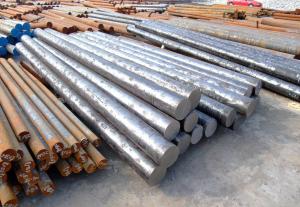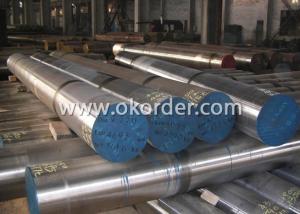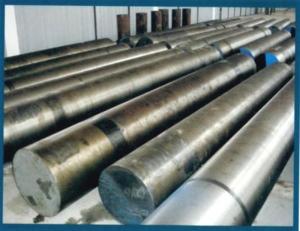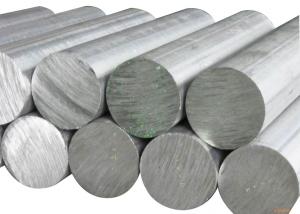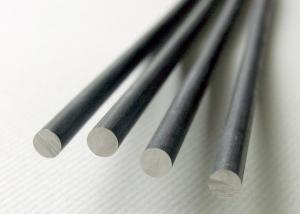DIN 17223 GRADE A B C D High Carbon Hot Rolled Spring Steel Wire Rod
- Loading Port:
- Tianjin
- Payment Terms:
- TT OR LC
- Min Order Qty:
- 25 m.t.
- Supply Capability:
- 10000 m.t./month
OKorder Service Pledge
OKorder Financial Service
You Might Also Like
Item specifice
DIN 17223 GRADE A B C D High Carbon Hot Rolled Spring Steel Wire Rod
Specification
Standards: | DIN 17223-1 Round Steel Wire For Springs |
DIN EN 10270-1 Steel Wire For Mechanical Springs | |
GB 3206-82 Carbon Constructional Quality Steel Wire | |
JIS G 3521-1991 Hard Drawn Steel Wire | |
GB 4357-89 Carbon Spring Steel Wire | |
YB/T 5220-93 Carbon Steel Wire For Non-Mechanical Springs | |
Steel Grade: | 30MnSi, SWRH62A,SWRH62B, SAE1060, SAE1065, 65Mn, SAE1070, SAE1075,SWRH72A, SWRH72B, SWRH77A, SWRH77B, SAE1080,SWRH82A, SWRH82B,C82DA. |
Wire Rod: | Shagang Steel Wire Rod |
Wire Diameter: | 0.20mm-12.50mm |
MOQ: | 25 TON |
Coil weight: | 20-1200KG |
Delivery time : | Within 7 days after receiving your deposite or L/C at sight |
Payment term: | T/T or L/C at sight |
FCL weight: | 20-27 tons (20’GP) |
Package: | in coil, with carrier, hard paper Z2,Z3,ect... |
Sample: | Available for further evaluation |
Usages: | Mechanical Equipment, Engineering Vehicle, Motor Vehicle, Motorcycle, Accumulator Car, Bicycle, Fitness Equipment, Elevator, Steel Wire Screen, Mattress And Sofa, Umbrella Frame, Electronic Products, ect. |
Spring Usages: | compression spring, torsion spring, extension spring, agricultural machines, die springs, strip & wire forming springs. |
Chemical Composition
Grade | C % | Si % | Mn % | P % | S % |
SAE1005 | 0.06 max | 0.10-0.25 | 0.35 max | 0.030 max | 0.030 max |
SAE1006 | 0.08 max | 0.10-0.25 | 0.25-0.40 | 0.030 max | 0.030 max |
SAE1008 | 0.10 max | 0.10-0.25 | 0.30-0.50 | 0.030 max | 0.030 max |
SAE1010 | 0.08-0.13 | 0.10-0.25 | 0.30-0.60 | 0.030 max | 0.030 max |
SAE 1015 | 0.12-0.19 | 0.17-0.37 | 0.35-0.65 | 0.035 max | 0.030 max |
SAE1016 | 0.13-0.18 | 0.10-0.25 | 0.30-0.60 | 0.030 max | 0.030 max |
15MN | 0.13-0.18 | 0.10-0.25 | 0.60-0.90 | 0.030 max | 0.030 max |
SAE1020 | 0.18-0.23 | 0.10-0.25 | 0.30-0.60 | 0.030 max | 0.030 max |
20Mn | 0.18-0.23 | 0.10-0.25 | 0.60-0.90 | 0.030 max | 0.030 max |
SAE 1025 | 0.22-0.30 | 0.17-0.37 | 0.50-0.80 | 0.035 max | 0.035 max |
Q 195 | 0.06-0.12 | 0.25-0.50 | 0.30 max | 0.050 max | 0.045 max |
Q235 | 0.22 max | 0.30 max | 0.55 max | 0.045 max | 0.050 max |
SAE 1030 | 0.28-0.34 | 0.10-0.25 | 0.30-0.60 | 0.030 max | 0.030 max |
30Mn | 0.28-0.34 | 0.10-0.25 | 0.60-0.90 | 0.030 max | 0.030 max |
SWRH 32 | 0.29-0.36 | 0.15-0.35 | 0.30-0.60 | 0.030 max | 0.030 max |
SAE 1035 | 0.32-0.40 | 0.17-0.37 | 0.50-0.80 | 0.035 max | 0.035 max |
SWRH 37 | 0.34-0.41 | 0.15-0.35 | 0.30-0.60 | 0.030 max | 0.030 max |
SWRH42A | 0.39-0.46 | 0.15-0.35 | 0.30-0.60 | 0.030 max | 0.030 max |
SWRH42B | 0.39-0.46 | 0.15-0.35 | 0.60-0.90 | 0.030 max | 0.030 max |
SWRH47A | 0.44-0.51 | 0.15-0.35 | 0.30-0.60 | 0.030 max | 0.030 max |
SAE1040/ 40# | 0.37-0.45 | 0.17-0.37 | 0.30-0.60 | 0.030 max | 0.030 max |
SAE1045/ 45# | 0.40-0.50 | 0.10-0.25 | 0.30-0.60 | 0.030 max | 0.030 max |
SWRH47B | 0.44-0.51 | 0.15-0.35 | 0.60-0.90 | 0.030 max | 0.030 max |
SAE 1050 | 0.47-0.55 | 0.17-0.37 | 0.50-0.80 | 0.035 max | 0.035 max |
SWRH52A | 0.49-0.56 | 0.15-0.35 | 0.30-0.60 | 0.030 max | 0.030 max |
SWRH52B | 0.49-0.56 | 0.15-0.35 | 0.60-0.90 | 0.030 max | 0.030 max |
SWRH57A | 0.54-0.61 | 0.15-0.35 | 0.30-0.60 | 0.030 max | 0.030 max |
SWRH57B | 0.54-0.61 | 0.15-0.35 | 0.60-0.90 | 0.030 max | 0.030 max |
SAE 1055 | 0.52-0.60 | 0.17-0.37 | 0.50-0.80 | 0.035 max | 0.035 max |
SAE1060/ 60# | 0.55-0.65 | 0.10-0.25 | 0.30-0.60 | 0.030 max | 0.030 max |
SWRH62A | 0.59-0.66 | 0.15-0.35 | 0.30-0.60 | 0.030 max | 0.030 max |
SWRH62B | 0.59-0.66 | 0.15-0.35 | 0.60-0.90 | 0.030 max | 0.030 max |
SWRH67A | 0.64-0.71 | 0.15-0.35 | 0.30-0.60 | 0.030 max | 0.030 max |
SWRH67B | 0.64-0.71 | 0.15-0.35 | 0.60-0.90 | 0.030 max | 0.030 max |
SAE1070/ 70# | 0.65-0.75 | 0.10-0.25 | 0.30-0.60 | 0.030 max | 0.030 max |
SAE 1075 | 0.72-0.80 | 0.17-0.37 | 0.30-0.60 | 0.035 max | 0.035 max |
SWRH72A | 0.69-0.76 | 0.15-0.35 | 0.30-0.60 | 0.030 max | 0.030 max |
SWRH72B | 0.69-0.76 | 0.15-0.35 | 0.60-0.90 | 0.030 max | 0.030 max |
SWRH77A | 0.74-0.81 | 0.15-0.35 | 0.30-0.60 | 0.030 max | 0.030 max |
SWRH77B | 0.74-0.81 | 0.15-0.35 | 0.60-0.90 | 0.030 max | 0.030 max |
SAE1080/ 80# | 0.75-0.88 | 0.10-0.25 | 0.60-0.90 | 0.030 max | 0.030 max |
SWRH82A | 0.79-0.86 | 0.15-0.35 | 0.30-0.60 | 0.030 max | 0.030 max |
SWRH82B | 0.79-0.86 | 0.15-0.35 | 0.60-0.90 | 0.030 max | 0.030 max |
SAE 1080 | 0.75-0.88 | 0.10-0.25 | 0.60-0.90 | 0.030 max | 0.030 max |
SAE 1085 | 0.82-0.90 | 0.17-0.37 | 0.50-0.80 | 0.035 max | 0.035 max |
1215/SUM23 | 0.05-0.16 | 0.15 max | 0.70-1.20 | 0.05-0.10 | 0.10-0.35 |
Company Information
CNBM International Corporation is the most import and export platform of CNBM group(China National Building Material Group Corporation) ,which is a state-owned enterprise, ranked in 270th of Fortune Global 500 in 2015.
With its advantages, CNBM International are mainly concentrate on Cement, Glass, Iron and Steel, Ceramics industries and devotes herself for supplying high quality series of refractories as well as technical consultancies and logistics solution.
After-sale service | CNBM provides the services and support you need for every step of our cooperation. We’re the business partners you can trust; you can relax and get on with doing business. |
For any problem, please kindly contact us at any your convenient time, we’ll reply you in our first priority within 24 hours | |
Advantages | Industry experience over 20 years. |
Shipment of goods -More than 70 countries worldwide. | |
The most convenient transport and prompt delivery. | |
Competitive price with best service. | |
High technical production line with top quality products. | |
High reputation based on best quality products. |
Products Show
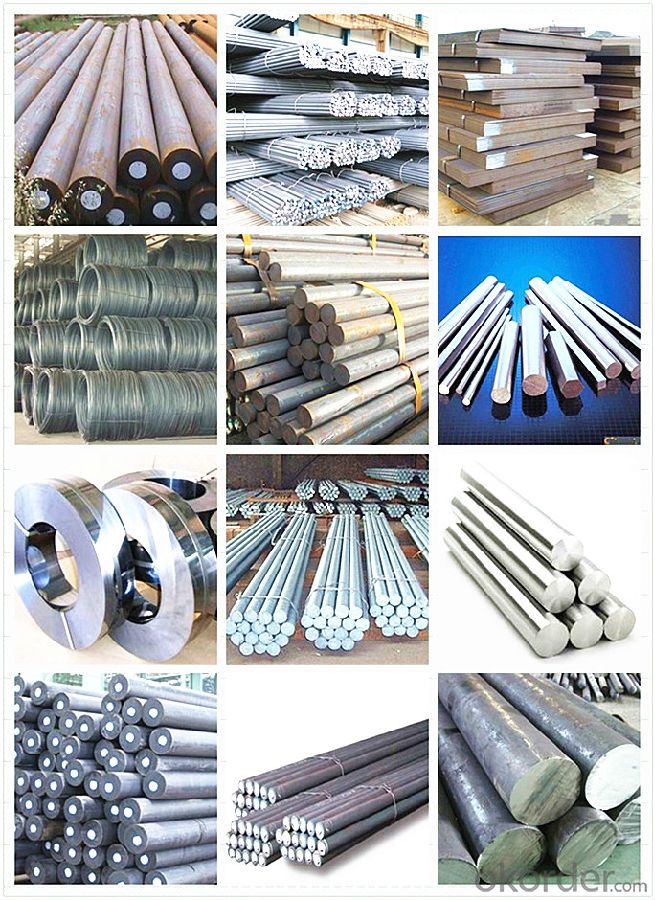
FAQ
Are you a trading company or manufacturer? | Manufacturer |
What’s the MOQ? | 3 metric ton |
What’s your delivery time? | 15-35 days after downpayment received |
Do you Accept OEM service? | Yes |
what’s your delivery terms? | FOB/CFR/CIF |
What's the Payment Terms? | 30% as deposit,70% before shipment by T/T |
Western Union acceptable for small amount. | |
L/C acceptable for large amount. | |
Scrow ,Paybal,Alipay are also ok | |
Why choose us? | Chose happens because of quality, then price, We can give you both. |
Additionally, we can also offer professional products inquiry, products knowledge train (for agents), smooth goods delivery, excellent customer solution proposals. | |
What's your available port of Shipment? | Main Port, China |
What’s your featured services? | Our service formula: good quality+ good price+ good service=customer's trust |
Where are your Market? | Covering more than 160 countries in the world |
- Q:What's the difference between special steel and ordinary steel?
- Compared with ordinary steel, special steel has higher strength and toughness, physical properties, chemical properties, biocompatibility and process performance.
- Q:How does special steel withstand extreme temperatures?
- Due to its unique composition and production process, special steel possesses the ability to endure extreme temperatures. An essential factor in achieving this is the incorporation of alloying elements such as chromium, molybdenum, and nickel, which enhance the steel's resistance to heat. These elements react to form stable oxides on the steel's surface, forming a protective shield against oxidation and corrosion at high temperatures. Furthermore, special steel undergoes specific heat treatment methods like quenching and tempering, which refine its microstructure and enhance its mechanical properties. This process strengthens the steel, enabling it to maintain its strength and hardness even under harsh temperature conditions. In addition, the manufacturing process of special steel requires precision and control over the cooling rate. This controlled cooling prevents the formation of brittle phases, ensuring that the steel maintains its toughness and ductility at both high and low temperatures. Moreover, the grain size of special steel is meticulously regulated through techniques like grain refinement, resulting in a more uniform and fine-grained microstructure. This fine-grained structure enhances the steel's ability to resist thermal fatigue and creep, enabling it to endure prolonged exposure to extreme temperatures without significant degradation. Overall, the combination of alloying elements, specialized heat treatment processes, controlled cooling, and refined microstructure renders special steel highly capable of withstanding extreme temperatures while preserving its structural integrity and mechanical properties.
- Q:Can special steel be used in the medical industry?
- Yes, special steel can be used in the medical industry. Special steel, specifically stainless steel, is commonly used in the manufacturing of medical devices and equipment due to its corrosion resistance, biocompatibility, and sterilization capabilities. It is used for surgical instruments, implants, prosthetics, and various other medical applications where durability, hygiene, and non-reactivity are essential.
- Q:Can special steel be used in the production of cutting tools?
- Yes, special steel can be and is commonly used in the production of cutting tools. Special steel, such as high-speed steel or tool steel, is specifically engineered to have superior hardness, toughness, and wear resistance, making it ideal for manufacturing various types of cutting tools like drills, saw blades, milling cutters, and lathe tools.
- Q:What are the applications of special steel?
- Special steel has a wide range of applications across various industries such as automotive, aerospace, construction, and manufacturing. It is used in the production of high-performance components and structures that require exceptional strength, durability, and resistance to heat, corrosion, and wear. Special steel finds applications in engine parts, aircraft components, cutting tools, molds, and high-rise buildings, among others.
- Q:How does special steel contribute to the aerospace defense industry?
- Special steel contributes to the aerospace defense industry by offering exceptional strength, durability, and corrosion resistance. It is used in the manufacturing of critical components, such as engine parts, landing gears, and structural elements, ensuring the safety and reliability of aircraft and defense systems. The high-performance properties of special steel enable the production of lighter aircraft, improving fuel efficiency and overall performance. Additionally, its ability to withstand extreme conditions and maintain structural integrity makes it crucial for military applications, including missile systems and armored vehicles.
- Q:What are the requirements for special steel used in transportation infrastructure?
- The requirements for special steel used in transportation infrastructure include high strength and durability, resistance to corrosion and fatigue, excellent weldability, and the ability to withstand extreme temperatures and environmental conditions. Additionally, it should meet specific standards set by regulatory bodies to ensure its safety and reliability in supporting and maintaining transportation structures such as bridges, railways, and highways.
- Q:How does special steel perform in impact loading conditions?
- Special steel is known for its exceptional performance in impact loading conditions. Due to its unique composition and manufacturing process, special steel exhibits remarkable strength, toughness, and resistance to deformation. When subjected to impact loading, special steel can effectively absorb and dissipate the energy generated, minimizing the risk of catastrophic failure or damage. The high strength of special steel allows it to withstand high impact forces without undergoing significant deformation or fracture. This characteristic makes it particularly suitable for applications where impact loading is prevalent, such as in the construction of heavy machinery, automotive components, and structural elements. Special steel's toughness is another crucial factor in its performance during impact loading conditions. It possesses excellent fracture toughness, enabling it to resist crack propagation and absorb impact energy without fracturing. This property ensures that special steel can withstand sudden and severe impacts without compromising its structural integrity. Additionally, special steel is often treated to enhance its resistance to impact loading conditions further. Processes such as heat treatment, forging, and quenching and tempering can increase the material's hardness and strength, making it even more capable of withstanding impact forces. In summary, special steel performs exceptionally well in impact loading conditions due to its high strength, toughness, and resistance to deformation. Its ability to absorb and dissipate energy efficiently, coupled with its resistance to fracture, makes it an ideal choice for applications where impact loading is a concern.
- Q:What is the impact of impurities on the properties of special steel?
- Impurities in special steel can have a significant impact on its properties. These impurities can affect the steel's strength, toughness, corrosion resistance, and overall performance. For instance, excessive levels of impurities like sulfur and phosphorus can reduce the steel's ductility and make it more prone to cracking. Similarly, high amounts of carbon impurities can affect the steel's hardness and make it more brittle. Therefore, controlling and minimizing impurities is crucial in ensuring that special steel meets the desired quality and performance requirements.
- Q:What are the challenges in heat treatment of special steel alloys?
- The heat treatment of special steel alloys presents various difficulties due to their unique composition and properties. One of the primary obstacles is attaining the desired microstructure and mechanical properties while maintaining dimensional stability. Special steel alloys often contain intricate alloying elements and necessitate specific heat treatment processes to achieve the desired properties. Another hurdle involves controlling the rates of heating and cooling throughout the heat treatment procedure. Special steel alloys are often sensitive to rapid or uneven temperature changes, which can lead to distortion, cracking, or the formation of undesirable phases. Hence, ensuring precise control of the heating and cooling rates is crucial to avoid these issues and ensure uniformity in the final product. Furthermore, the presence of alloying elements in special steel alloys can increase their hardenability, making it challenging to achieve the desired hardness consistently across the entire component. Adequate attention must be given to selecting appropriate heat treatment parameters, including temperatures, soaking times, and quenching media, in order to achieve the desired hardness and prevent excessive hardness gradients. Additionally, special steel alloys are prone to oxidation and decarburization during heat treatment due to their high alloy content and exposure to elevated temperatures. These reactions can result in surface defects and a decrease in carbon content, thereby impacting the final properties of the alloy. Consequently, careful control of protective atmospheres or heat treatment environments is necessary to prevent such issues. Moreover, the size and shape of components made from special steel alloys can pose challenges during heat treatment. Large or intricately shaped components require careful consideration of heating and cooling methods to ensure uniformity in microstructure and properties throughout the entire component. This may involve the use of specialized furnaces, fixtures, or heat treatment cycles to overcome these challenges. In conclusion, the challenges involved in heat treating special steel alloys encompass achieving the desired microstructure and mechanical properties, controlling heating and cooling rates, managing hardenability, preventing oxidation and decarburization, and addressing the size and shape of components. Overcoming these challenges demands a comprehensive understanding of the alloy's composition, properties, and the application of appropriate heat treatment techniques.
1. Manufacturer Overview |
|
|---|---|
| Location | |
| Year Established | |
| Annual Output Value | |
| Main Markets | |
| Company Certifications | |
2. Manufacturer Certificates |
|
|---|---|
| a) Certification Name | |
| Range | |
| Reference | |
| Validity Period | |
3. Manufacturer Capability |
|
|---|---|
| a)Trade Capacity | |
| Nearest Port | |
| Export Percentage | |
| No.of Employees in Trade Department | |
| Language Spoken: | |
| b)Factory Information | |
| Factory Size: | |
| No. of Production Lines | |
| Contract Manufacturing | |
| Product Price Range | |
Send your message to us
DIN 17223 GRADE A B C D High Carbon Hot Rolled Spring Steel Wire Rod
- Loading Port:
- Tianjin
- Payment Terms:
- TT OR LC
- Min Order Qty:
- 25 m.t.
- Supply Capability:
- 10000 m.t./month
OKorder Service Pledge
OKorder Financial Service
Similar products
New products
Hot products
Related keywords


























